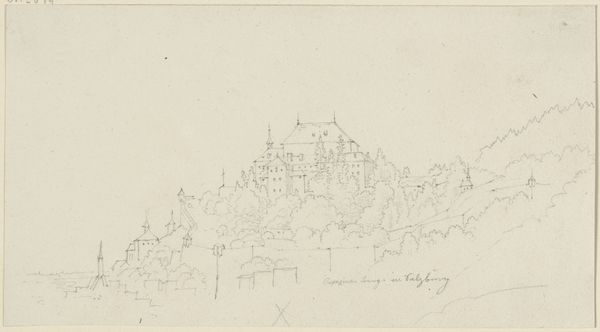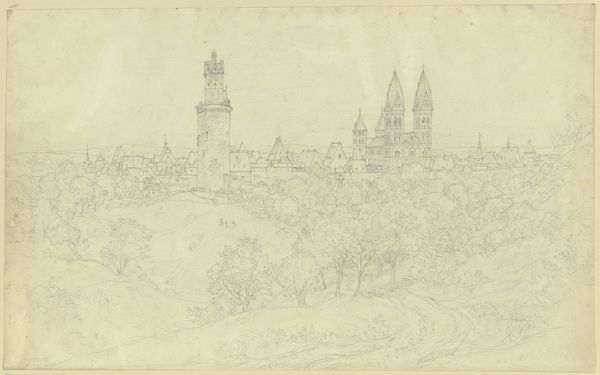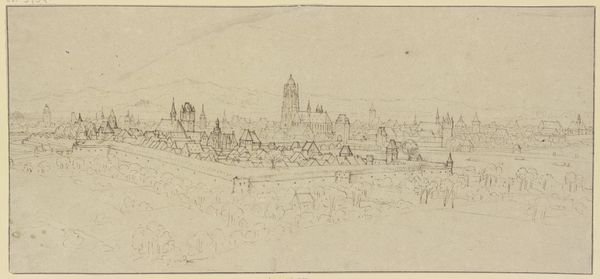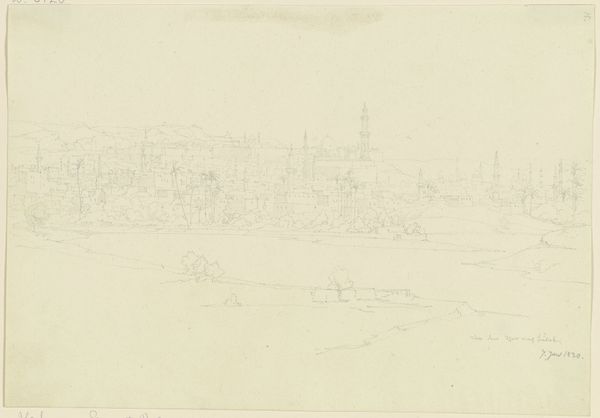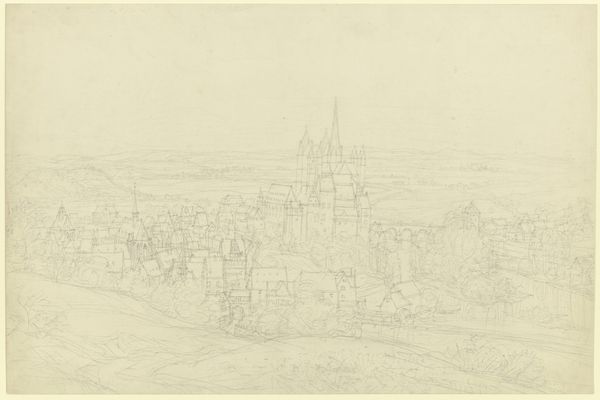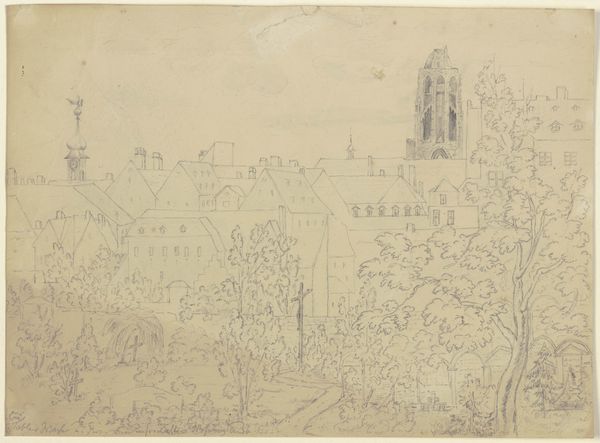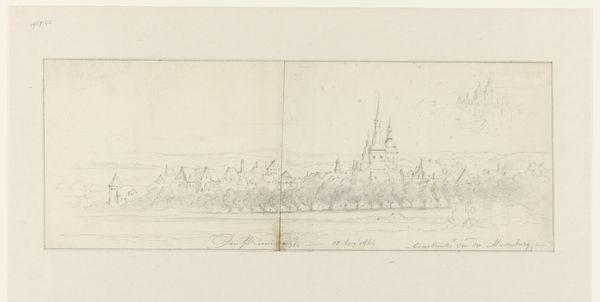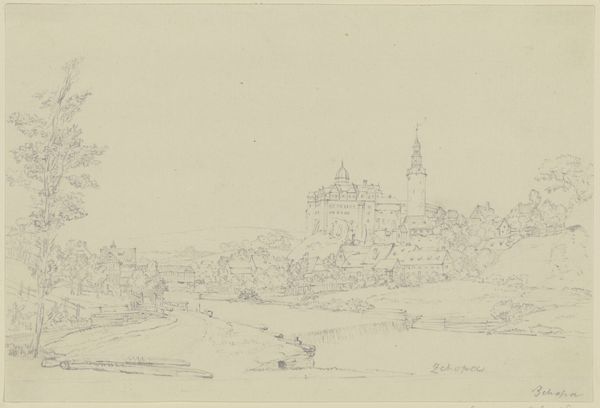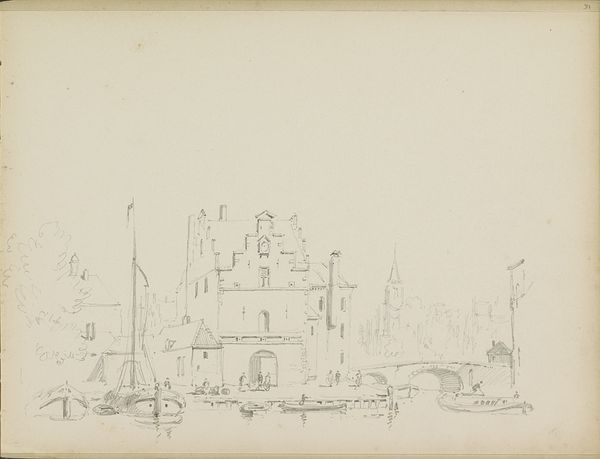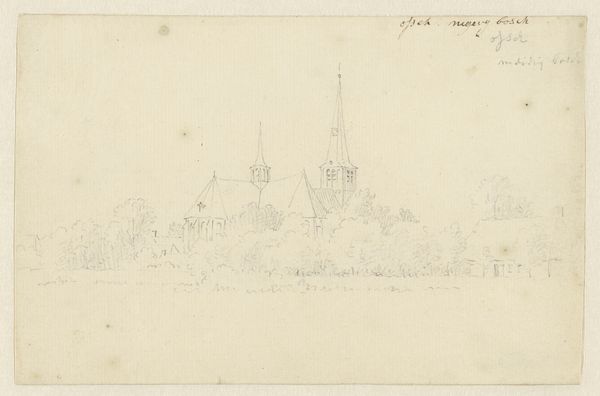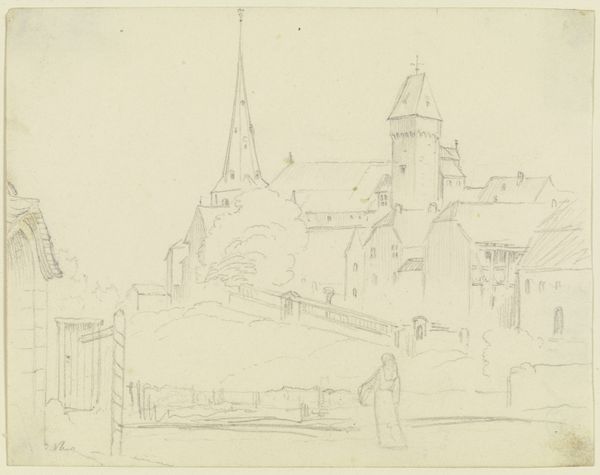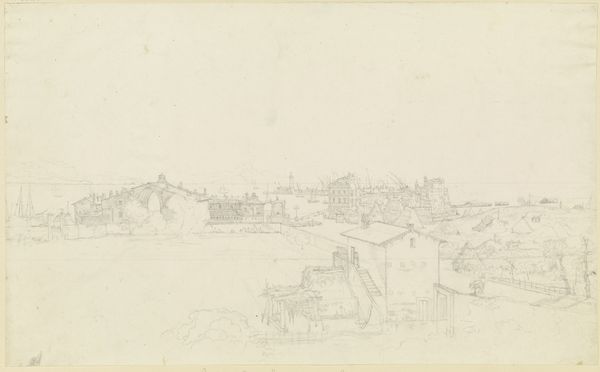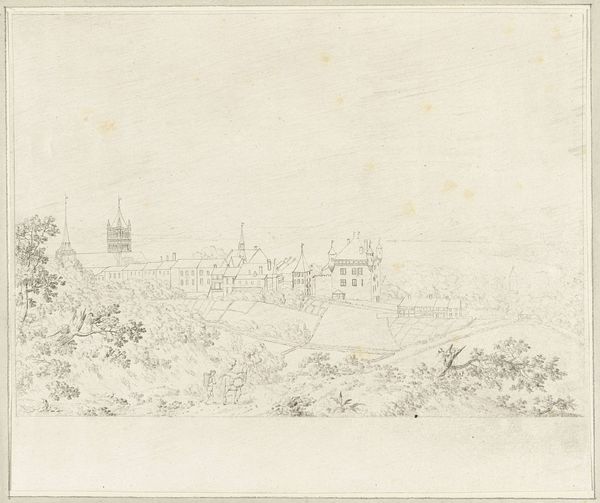
drawing, paper, pencil
#
drawing
#
16_19th-century
#
landscape
#
paper
#
personal sketchbook
#
german
#
sketch
#
pencil
#
cityscape
Copyright: Public Domain
Curator: This is a pencil drawing by Karl Ballenberger titled "Weinheim," currently held in the Städel Museum. Editor: My first impression is of a faded dream; almost imperceptible, as if rendered with a breath. There's a real sense of delicate ephemerality. Curator: Ballenberger captures more than just the buildings themselves; he seems to explore the atmosphere, the very spirit, of Weinheim. Look at how the pencil strokes dance across the paper, almost like memories flickering to life. I wonder if the lightness suggests his psychological or emotional remove from the location. Editor: Or, maybe, it is just a very light application of pencil. Think about the process; did he choose a particularly hard lead? Was the paper rough, requiring a gentler hand? The lack of definition makes me consider it as less of a finished artwork and more of a preparatory sketch or something from a personal sketchbook, documenting the town's architecture. Curator: True. Perhaps this cityscape held some personal significance. Cities can function as symbolic containers of identity. The lightness with which it’s rendered could also indicate a dreamscape, blurring the boundary between reality and imagination. I imagine a kind of longing. Editor: It’s fascinating how much the materiality dictates that interpretation. Imagine this rendered in dense charcoal or even watercolor – it would evoke a totally different feeling. I find myself more drawn to questions of production, the decisions surrounding mark-making itself. There is no sign of any expressive mark here! The choice of such a restrained technique really emphasizes the linear elements and the almost anonymous buildings of Weinheim. Curator: That’s interesting – this “anonymity”, or lack of visual emphasis, may serve to encourage reflection on the broader cultural impact of cities on individual lives. Think about the psychological influence a place holds on a collective, as experienced and internalised by Ballenberger. Editor: I keep circling back to the drawing's incompleteness; its open, raw nature, reminding us of art’s origins in work and making. It offers us a very unique sense of connection, or communion. Curator: Ultimately, it's a dance between the image, the act of creation, and our own responses to the spaces and stories cities hold. Editor: Indeed, an understated study of process and the subtle, quiet power of materials to provoke.
Comments
No comments
Be the first to comment and join the conversation on the ultimate creative platform.
